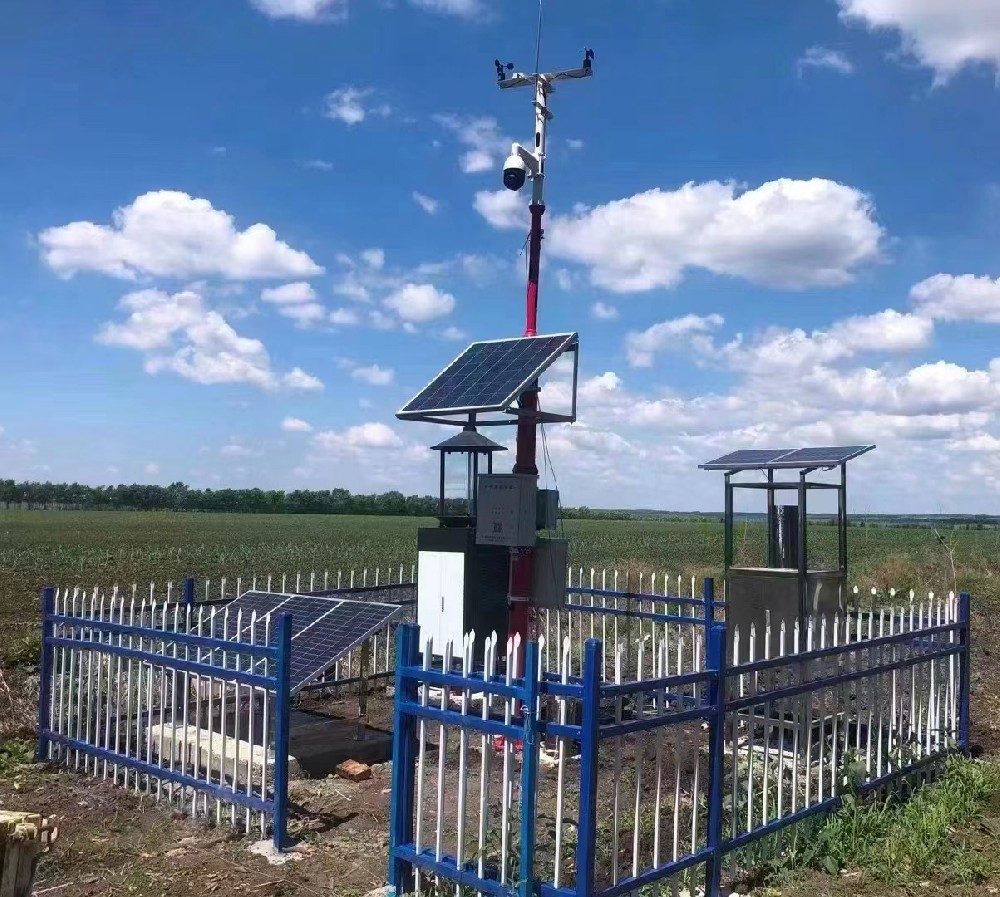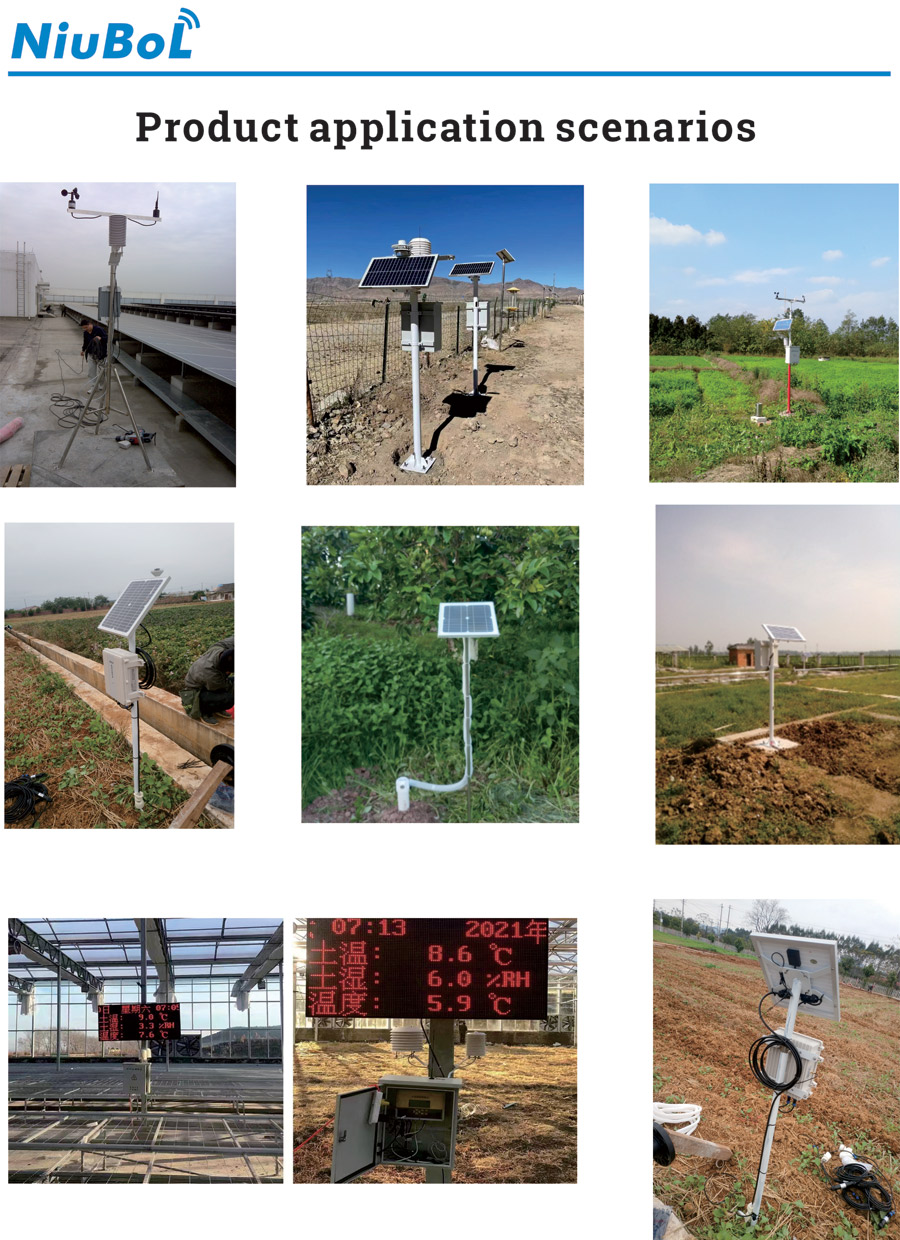

— Blogs —
—Products—
 Consumer hotline +8618073152920
Consumer hotline +8618073152920 WhatsApp:+8615367865107
Address:Room 102, District D, Houhu Industrial Park, Yuelu District, Changsha City, Hunan Province, China
Product knowledge
Time:2024-05-18 15:38:23 Popularity:1245
Agriculture is a basic industry of the national economy, and meteorological conditions are one of the important factors affecting agricultural production. With the continuous development of science and technology, the automatic agricultural weather station, as a modernized weather monitoring tool, has played an important role in agricultural production. It provides scientific decision-making basis for farmers and agricultural managers through real-time monitoring and collection of meteorological data, so as to improve the efficiency of agricultural production, reduce the waste of resources, and increase crop yield and quality.
With the acceleration of agricultural modernization, weather stations have become an important infrastructure for agricultural production. The purpose of this paper is to introduce the working principle and application scope of agricultural automatic weather station, to elaborate its significance to agricultural production, and how to transform meteorological data into practical guidance for agricultural production, so as to promote the process of agricultural modernization and improve the efficiency of agricultural production.
1. Temperature: Monitoring the temperature of the air, usually in degrees Celsius (°C) or degrees Fahrenheit (°F). This is a very important parameter in agricultural production as it affects the growth rate of crops and the occurrence of pests and diseases.
2. Humidity: A measure of the amount of moisture in the air, usually expressed as a percentage (%). Humidity has an important effect on crop transpiration and the incidence of diseases.
3. wind speed: assesses the speed of the wind, usually expressed in meters per second (m/s) or miles per hour (mph). Wind can affect crop pollination, disease transmission, and the operation of agricultural machinery.
4. Precipitation: Records the amount of precipitation, either rain or snow, usually in millimeters (mm) or inches (in). Precipitation is critical for crop growth and water management.
5. hours of sunshine: monitors the length of time, in hours (h), that the sun is directly above the ground. The number of hours of sunlight affects photosynthesis and energy yield of crops.
6. Evapotranspiration: Measurement of the potential evapotranspiration that occurs due to temperature and moisture conditions, usually measured in millimeters (mm) or inches (in). This is important for irrigation planning and water management.
7. barometric pressure: records atmospheric pressure, usually in hectopascals (hPa) or inches of mercury (inHg). Changes in barometric pressure can affect weather patterns and the performance of agricultural machinery.
8. Soil Moisture: Monitors the moisture content of the soil, usually in percent (%) or millimeters (mm). Soil moisture is critical to crop growth and irrigation decisions.
9. Other parameters: Some advanced automated agrometeorological stations may also monitor other parameters such as radiation (both ultraviolet and photosynthetic), foliar temperatures, crop growth indices, and so on.

1. Data collection: The automated weather station for agriculture continuously monitors and collects a variety of meteorological data, including temperature, humidity, wind speed, precipitation, hours of sunshine, and so on.
2. Data analysis: The collected data needs to be analyzed to identify any unusual trends or critical values. This may involve comparison with historical data or the use of specific weather models to predict future weather conditions.
3. Threshold setting: Safe thresholds for various meteorological factors are identified based on the specific needs of the crop and local climatic conditions. For example, certain crops may have specific requirements for temperature or precipitation.
4. Early warning system: When meteorological data approaches or exceeds these thresholds, the system issues an early warning to notify farmers or agricultural managers to take action.
5. Decision support: Combined with soil moisture, crop growth models and pest and disease monitoring data, the system provides farmers with integrated decision support to guide farming activities, such as irrigation, fertilizer application, pest and disease control, and harvest timing.
6. Implementing actions: Farmers or agricultural managers take specific actions based on this guidance. For example, if hot weather is predicted for the next few days, they may irrigate earlier to keep their crops hydrated.
7. Evaluation of effectiveness: After actions are taken, the effectiveness is evaluated and fed back to the weather station system so that the model and forecast accuracy can be continuously optimized.
8. Education and training: In order for farmers to better understand and utilize weather data, it may also be necessary to provide education and training to increase their weather awareness and data application capabilities.
Through these steps, meteorological data can be effectively translated into concrete guidance for agricultural production, helping to improve agricultural productivity, reduce resource wastage, and increase crop yield and quality.
1. Improving agricultural production efficiency: through real-time weather monitoring, farmers can more accurately grasp the growth needs of crops and environmental changes, thereby optimizing farming operations and improving agricultural production efficiency.
2. Reducing disaster losses: weather stations can monitor weather changes in real time and provide early warning information to help farmers take timely measures to prevent and mitigate disasters and reduce losses from natural disasters on agricultural production.
3. Promote the sustainable development of agriculture: through the analysis of meteorological data, it can optimize the structure of agricultural products, reduce the frequency of pesticide use and agricultural emissions, and promote the sustainable development of agriculture.
4. Reducing production costs: automatic agricultural weather stations can help farmers reduce labor input and lower production costs. Through real-time monitoring and data analysis, farmers can more accurately grasp the growth and needs of crops, reducing unnecessary waste and input. At the same time, the intelligent irrigation scheduling system can carry out intelligent irrigation according to factors such as soil moisture, crop transpiration, meteorological conditions and crop demand, saving water, improving irrigation efficiency and further reducing production costs.
5. Increase the market competitiveness of agricultural products: Through the application of agricultural automatic weather stations, farmers can produce more high-quality, high-yield agricultural products and improve the market competitiveness of agricultural products. High-quality agricultural products can not only meet the needs of consumers, but also improve the added value of agricultural products and increase the income of farmers.

In conclusion, the application of automatic agricultural weather stations can bring significant economic benefits, including improving crop yield and quality, reducing production costs, increasing the market competitiveness of agricultural products, promoting the process of agricultural modernization and reducing disaster losses. Therefore, it is of great significance to vigorously promote and apply automatic agricultural weather stations to promote the process of agricultural modernization and improve the efficiency of agricultural production.
Prev:About agricultural weather stations
Next:Smart greenhouse environmental monitoring sensors and role
Related recommendations
Sensors & Weather Stations Catalog
Agriculture Sensors and Weather Stations Catalog-NiuBoL.pdf
Weather Stations Catalog-NiuBoL.pdf
Related products
 Combined air temperature and relative humidity sensor
Combined air temperature and relative humidity sensor Soil Moisture Temperature sensor for irrigation
Soil Moisture Temperature sensor for irrigation Soil pH sensor RS485 soil Testing instrument soil ph meter for agriculture
Soil pH sensor RS485 soil Testing instrument soil ph meter for agriculture Wind Speed sensor Output Modbus/RS485/Analog/0-5V/4-20mA
Wind Speed sensor Output Modbus/RS485/Analog/0-5V/4-20mA Tipping bucket rain gauge for weather monitoring auto rainfall sensor RS485/Outdoor/stainless steel
Tipping bucket rain gauge for weather monitoring auto rainfall sensor RS485/Outdoor/stainless steel Pyranometer Solar Radiation Sensor 4-20mA/RS485
Pyranometer Solar Radiation Sensor 4-20mA/RS485
Screenshot, WhatsApp to identify the QR code
WhatsApp number:+8615367865107
(Click on WhatsApp to copy and add friends)
